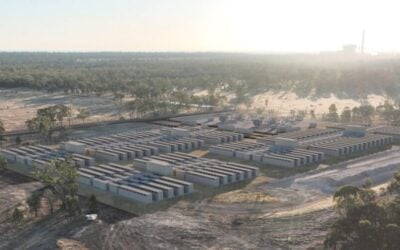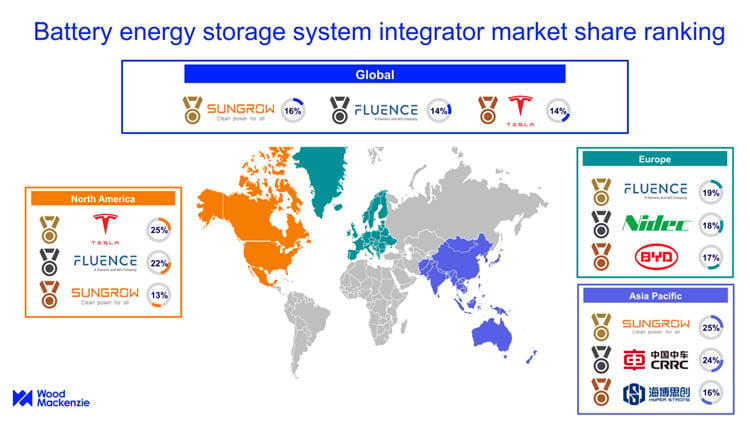Report on the Future of Small-Scale Renewable Power Stations in East Anglia
Introduction
Small-scale renewable power stations in East Anglia, which contribute significantly to sustainable energy production and local employment, face uncertainty due to potential changes in government support. This report highlights the challenges and implications for the Sustainable Development Goals (SDGs), particularly focusing on affordable and clean energy (SDG 7), decent work and economic growth (SDG 8), and climate action (SDG 13).
Current Operations and Government Support
Melton Renewable Energy operates three biomass power plants located in Thetford (Norfolk), Ely (Cambridgeshire), and Eye (Suffolk). These plants generate electricity by burning agricultural waste such as poultry litter and straw, thus promoting sustainable waste management and renewable energy production.
- The company has historically benefited from the UK government’s Renewables Obligation scheme, which provides financial support to renewable energy producers.
- However, the current subsidy contract is set to expire in April 2027, with no confirmed plans for renewal.
Economic and Employment Implications
Eddie Wilkinson, CEO of Melton Renewable Energy, emphasized the economic risks associated with the potential loss of government support:
- Without continued subsidies, the economic viability of these power stations is at risk.
- Approximately 150 jobs across the company may be jeopardized, impacting local employment and economic stability (SDG 8).
- Long-term certainty and positive government decisions are urgently needed to sustain these operations.
Environmental Impact and Sustainable Waste Management
The biomass plants contribute to environmental sustainability by utilizing agricultural waste rather than harvesting new resources:
- They process waste products, avoiding deforestation and promoting responsible consumption and production (SDG 12).
- Richard Bloomfield, manager at Thetford Power Station, highlighted the environmental risks if the plants cease operation:
- Without these facilities, an estimated 450,000 tonnes of agricultural waste could accumulate in fields, leading to water pollution and damage to local ecosystems.
- The power station generates enough electricity to supply approximately 100,000 homes annually, contributing to clean energy access (SDG 7).
Government Assessment and Future Outlook
The Department of Energy Security is currently evaluating the implications of ending subsidies on energy security, clean power generation, and environmental outcomes. No definitive decisions have been made regarding support for small-scale biomass generators beyond 2027.
Stakeholder Perspectives
- Eddie Wilkinson stressed the urgency of securing long-term support to maintain renewable energy infrastructure and jobs.
- Richard Bloomfield expressed concern about the environmental consequences of losing biomass power stations.
- Terry Jermy, Labour MP for South West Norfolk, acknowledged the importance of biomass energy in the region’s energy mix and economic landscape, advocating for continued government backing:
- He emphasized biomass as a crucial component of diverse energy sources.
- He reported encouraging discussions with the government and highlighted the economic, environmental, and electricity supply benefits of these sites.
Alignment with Sustainable Development Goals
The continuation and support of small-scale biomass power stations directly contribute to several SDGs:
- SDG 7 (Affordable and Clean Energy): Promoting renewable energy generation from agricultural waste reduces reliance on fossil fuels and increases energy access.
- SDG 8 (Decent Work and Economic Growth): Sustaining jobs and economic activity in local communities through renewable energy industries.
- SDG 12 (Responsible Consumption and Production): Utilizing agricultural waste responsibly and reducing environmental pollution.
- SDG 13 (Climate Action): Supporting clean energy initiatives that mitigate climate change impacts.
Conclusion
Small-scale renewable power stations in East Anglia play a vital role in sustainable energy production, environmental protection, and local employment. The uncertainty surrounding government subsidy renewal poses significant risks to these contributions. It is imperative for policymakers to provide clear, long-term support to ensure the continued alignment of these operations with the Sustainable Development Goals and to secure a sustainable future for the region.
1. Sustainable Development Goals (SDGs) Addressed or Connected
- SDG 7: Affordable and Clean Energy
- The article discusses small scale renewable power stations generating energy from agricultural waste, highlighting the importance of clean and affordable energy sources.
- SDG 8: Decent Work and Economic Growth
- The potential risk to 150 jobs at Melton Renewable Energy and about 40 jobs at Thetford Power Station connects to employment and economic growth concerns.
- SDG 12: Responsible Consumption and Production
- Use of agricultural waste and litter as fuel promotes sustainable waste management and responsible consumption.
- SDG 13: Climate Action
- The article emphasizes the environmental impact of biomass plants and the need for clean power to reduce pollution and protect ecosystems.
- SDG 15: Life on Land
- Concerns about litter seeping into watercourses and causing pollution relate to protecting terrestrial ecosystems and biodiversity.
2. Specific Targets Under Identified SDGs
- SDG 7: Affordable and Clean Energy
- Target 7.2: Increase substantially the share of renewable energy in the global energy mix.
- Target 7.a: Enhance international cooperation to facilitate access to clean energy research and technology.
- SDG 8: Decent Work and Economic Growth
- Target 8.5: Achieve full and productive employment and decent work for all women and men.
- Target 8.4: Improve progressively, through 2030, global resource efficiency in consumption and production.
- SDG 12: Responsible Consumption and Production
- Target 12.5: Substantially reduce waste generation through prevention, reduction, recycling and reuse.
- SDG 13: Climate Action
- Target 13.2: Integrate climate change measures into national policies, strategies and planning.
- SDG 15: Life on Land
- Target 15.1: Ensure the conservation, restoration and sustainable use of terrestrial and inland freshwater ecosystems.
3. Indicators Mentioned or Implied to Measure Progress
- SDG 7 Indicators
- Proportion of total energy consumption from renewable sources (implied by the use of agricultural waste for power generation).
- Number of households supplied with renewable energy (e.g., Thetford Power Station supplying energy for about 100,000 homes).
- SDG 8 Indicators
- Number of jobs supported in renewable energy sector (150 jobs at Melton Renewable Energy, about 40 at Thetford Power Station).
- SDG 12 Indicators
- Amount of waste reused or recycled (use of 1,600 tonnes of litter daily at Thetford Power Station).
- SDG 13 Indicators
- Reduction in pollution levels and environmental impact (implied by concerns over pollution if biomass plants close).
- SDG 15 Indicators
- Extent of pollution in watercourses and impact on rivers (implied by the risk of 450,000 tonnes of litter seeping into watercourses).
4. Table of SDGs, Targets, and Indicators
| SDGs | Targets | Indicators |
|---|---|---|
| SDG 7: Affordable and Clean Energy |
|
|
| SDG 8: Decent Work and Economic Growth |
|
|
| SDG 12: Responsible Consumption and Production |
|
|
| SDG 13: Climate Action |
|
|
| SDG 15: Life on Land |
|
|
Source: bbc.com







